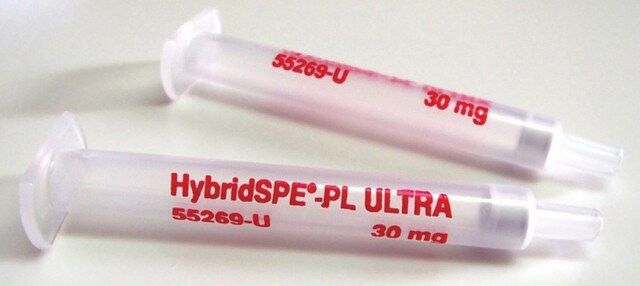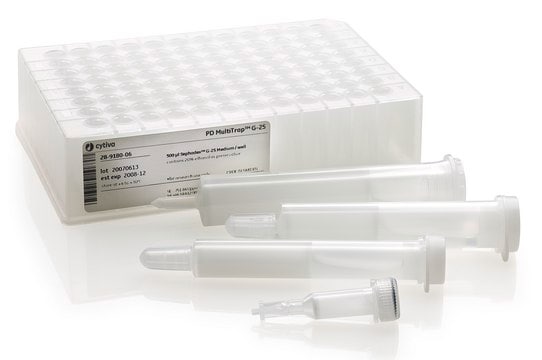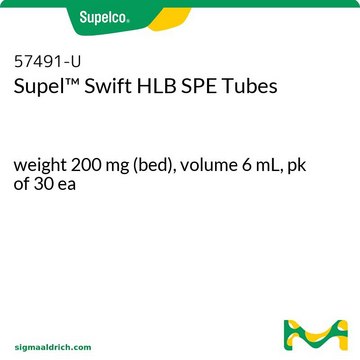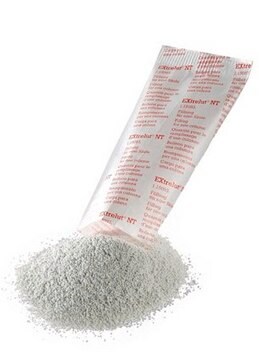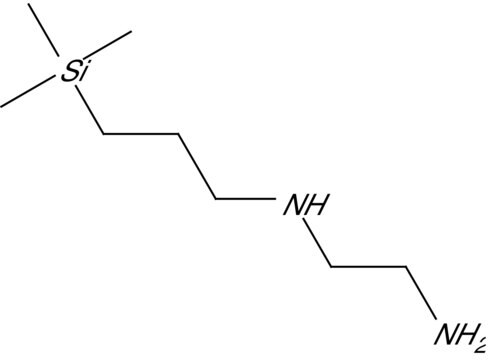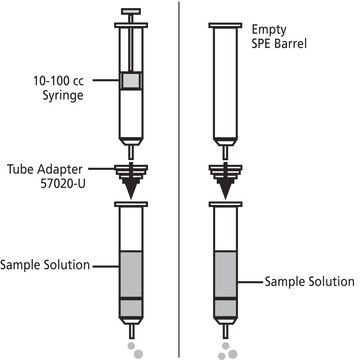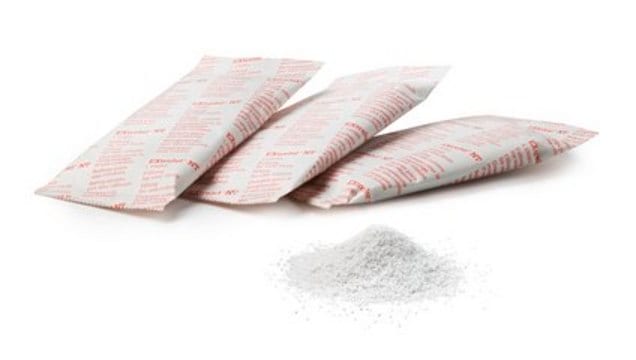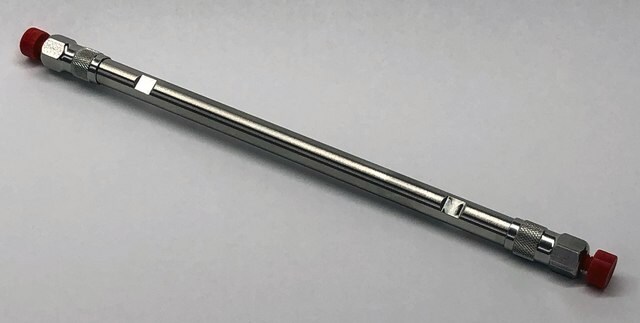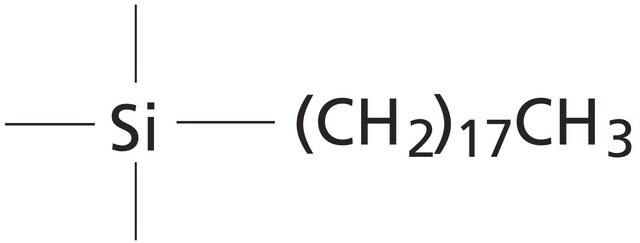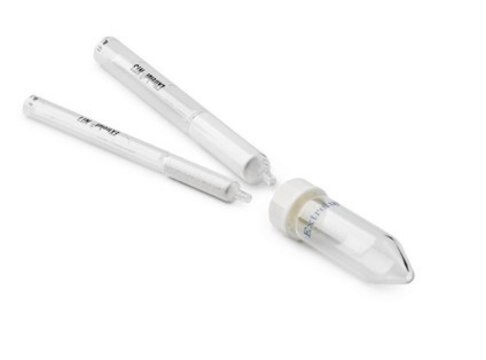55261-U
HybridSPE®-Phospholipid solid phase extraction (SPE) Cartridge
Cartridge, bed wt. 30 mg, volume 1 mL, pk of 100
Sinónimos:
HybridSPE (phospholipid and protein removal) SPE cartridge tube, 1 mL
About This Item
Productos recomendados
Nombre del producto
HybridSPE®-Phospholipid, Cartridge, bed wt. 30 mg, volume 1 mL, pk of 100
material
PE frit (20 μm)
polypropylene hardware
Quality Level
product line
HybridSPE®
composition
bed wt., 30 mg
packaging
pk of 100
technique(s)
solid phase extraction (SPE): suitable
volume
1 mL
matrix active group
zirconia-based phase
¿Está buscando productos similares? Visita Guía de comparación de productos
General description
The "In-well" and "In-cartridge" precipitation methods are available for the HybridSPE-Phospholipid 96-well version and HybridSPE-Phospholipid Ultra cartridge in which biological plasma/serum is first added to either the well or cartridge, followed by acidified acetonitrile (precipitation agent). After a brief mixing/vortexing step, vacuum is applied. Because the 96-well and Ultra cartridge versions contain a series of low porosity hydrophobic filters/frits, the packed-bed filter/frit assembly acts as a depth filter facilitating the concurrent removal of both phospholipids and precipitated proteins during the extraction process. Standard HybridSPE-Phospholipid cartridges require an "off-line" precipitation method.
Application
- Less is more: a methodological assessment of extraction techniques for per- and polyfluoroalkyl substances (PFAS) analysis in mammalian tissues.: This study assesses various extraction methods, including HybridSPE®-Phospholipid, for analyzing PFAS in tissues, highlighting efficiency and reproducibility (Mertens et al., 2023).
- Rapid analysis of 65 pharmaceuticals and 7 personal care products in plasma and whole-body tissue samples of fish using acidic extraction, zirconia-coated silica cleanup, and liquid chromatography-tandem mass spectrometry.: This paper describes a rapid analytical method incorporating HybridSPE®-Phospholipid for sample preparation, demonstrating its application in environmental toxicology (Tanoue et al., 2020).
Features and Benefits
- For use in conjunction with off-line protein precipitation.
- Merges the simplicity of protein precipitation and the selectivity of SPE via the targeted removal of phospholipids
- Reduce ion-suppression through the complete removal of phospholipids and precipitated proteins
- 2-3 step generic procedure
- Minimal to no method development
- Available in 96-well and 1 mL cartridge dimensions
Legal Information
Application
related product
Storage Class
11 - Combustible Solids
wgk_germany
WGK 3
flash_point_f
Not applicable
flash_point_c
Not applicable
Elija entre una de las versiones más recientes:
¿Ya tiene este producto?
Encuentre la documentación para los productos que ha comprado recientemente en la Biblioteca de documentos.
Los clientes también vieron
Artículos
This Sigma-Aldrich article continues to detail new methodology for the analysis of Vitamin D metabolites using HybridSPE-Phospholipid technology.
We are presenting an article focusing on ion-suppression and phospholipid contamination and some of their major causes and difficulties.
This Sigma-Aldrich article discusses how the HybridSPE-Phospholipid Technology works and how the phospholipids are removed.
Protocolos
A simple method to enrich phospholipids from plasma samples, involving a HybridSPE-PPT 96-well plate that both retains phospholipids and removes precipitated proteins.
Contenido relacionado
Small molecules are ions and compounds of molecular weight typically less than 900 daltons. These compounds can be effectively separated and analyzed by HPLC, UHPLC and LC-MS using mainly silica particles or monolithic stationary phases with a broad range of column chemistries (modifications).
Las moléculas pequeñas son iones y compuestos de peso molecular normalmente inferior a 900 dalton. Estos compuestos pueden separarse y analizarse con eficacia mediante HPLC, UHPLC y LC-MS utilizando principalmente partículas de sílice o fases estacionarias monolíticas con una amplia gama de composiciones químicas de la columna (modificaciones).
Chromatograms
application for HPLCNuestro equipo de científicos tiene experiencia en todas las áreas de investigación: Ciencias de la vida, Ciencia de los materiales, Síntesis química, Cromatografía, Analítica y muchas otras.
Póngase en contacto con el Servicio técnico